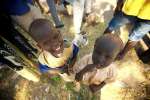- Text size
 |
|  |
|  |
| 
- Français
UNHCR steps up measures to rein in Hepatitis E among South Sudanese refugees in Ethiopia
Briefing Notes, 8 August 2014
This is a summary of what was said by UNHCR spokesperson Ariane Rummery – to whom quoted text may be attributed – at the press briefing, on 8 August 2014, at the Palais des Nations in Geneva.
The liver disease Hepatitis E that has spread across South Sudan over the last two years has now appeared in three border camps that house some 150,000 South Sudanese refugees in Ethiopia.
The UN refugee agency has worked swiftly with the Ethiopian government, the World Health Organization, the refugees themselves, and other partners to contain the disease. As a result, we are seeing a decline in infections even though, unfortunately, 13 refugees have died from Hepatitis E since April.
Hepatitis E is caused by a virus and is spread mainly by consuming contaminated water and food. For this reason, we have been working to improve sanitation in the camps and increase the amount and availability of safe drinking water.
Our key message is for refugees simply to keep their hands clean. In the camps, Médecins Sans Frontières – France, has distributed 80,000 bars of soap donated by UNICEF in the camps to encourage better hygiene. In addition, we are telling refugees not to defecate in the open and are building more latrines. We are also telling refugees not to let animals defecate close to their homes.
The refugees know Hepatitis E as "Yellow Eyes" so we are sharing the message: "If you have yellow eyes, go to the clinic." Getting early medical treatment is essential.
Since April, there have been 367 cases of Hepatitis E in Leichuor, Kule and Tierkidi camps, which are all located in the Gambella region of western Ethiopia, bordering South Sudan. Laboratories in Addis Ababa and Nairobi confirmed that the virus is related to the Hepatitis E outbreak reported in neighboring South Sudan. Six more cases were reported in the refugee hosting communities of Itang and Nyin-yan.
Hepatitis E hits people between the ages of 15 and 40 hardest. In the three camps where we see refugees with Hepatitis E, a large majority are young people aged 12-40. Hepatitis E is particularly dangerous for pregnant women; as many as 20 to 25 percent of pregnant women who contract the disease may die. A pregnant woman was among the 13 refugees who have died.
Ethiopia is home to 247,554 South Sudanese refugees, including more than 185,000 who have fled since fighting broke out in mid-December last year.
In other neighboring African countries that host South Sudanese refugees, medical staff are screening all refugees as they arrive to find out whether they are or have been sick. If needed, they are further examined to see if they may have Hepatitis E or cholera, which has also been sweeping South Sudan since 15 May. In addition, UNHCR and partners have also stockpiled medicine, medical supplies, and water treatment supplies as a normal precaution.
For more information on this topic, please contact:
- In Geneva, Ariane Rummery on mobile +41 79 200 7617
- In Ethiopia, Kisut Gebre Egziabher on mobile +25 19 11 20 89 01
- In Kenya, Kitty McKinsey on mobile +254 735 337 608



























































